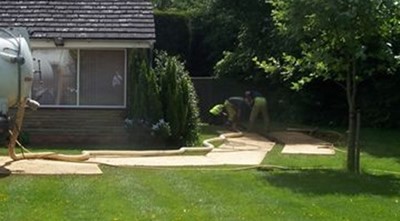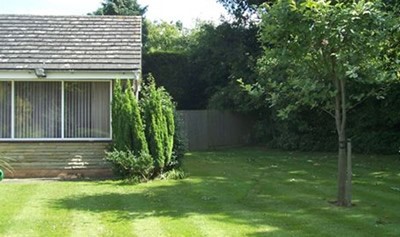Tree root barriers for subsidence remediation
Trees and large shrubs require substantial amounts of water which is collected via the tree’s root network. As a result of growth or the need to find more moisture, this root network can extend many metres from the trunk of a tree and can grow under the foundations of buildings and walls.
This can cause subsidence on properties, particularly properties built on reactive clay soils. As moisture is extracted from the soil by the roots the clay ‘shrinks’. If clay shrinkage occurs beneath the foundations of the building, this will induce subsidence on the property.
A common solution is to remove the tree. However, due to technical and legal reasons this is not always an option. A root barrier will allow trees and other vegetation to remain whilst ensuring that they will not have an impact upon an adjacent property.
When to choose a tree root barrier solution:
- Severe pruning or removal of the tree are unacceptable methods of amelioration.
- The tree must remain (e.g. due to a Tree Preservation Order).
- When the tree roots can be demonstrably implicated to be causing indirect damage on a nearby building (e.g. localised clay shrinkage).
- To prevent tree root trespass to neighbouring properties as part of a tree management plan.
Benefits of a tree root barrier:
- Quick Installation
- Minimal Disruption
- Enables Vegetation to remain (and so facilitates work on trees protected by Tree Preservation Orders)
- Cheaper than underpinning for most cases.
- Can be undertaken during the nesting season (trees cannot be removed if they disturb nesting birds or roosting bats.
Tree root barrier installations with hydro vacuum excavation
As with any landscaping, the installation of the tree root barriers can be disruptive to the site. For many clients it is preferable to use a ‘hydrovac’ as an alternative. This piece of specialist machinery uses water jets and suction to cut a narrow trench for the installation of the barrier. This method will ensure that any disruption from the installation if minimised and that your property is left as tidy as possible during and upon completion of an excavation. See figures 1-2.

Figure 1. Root barrier installation using hydro vacuum excavation. This creates less disruption than a mechanical excavator. (M Kawecki)

Figure 2. The tree root barrier has been completed using hydrovac excavation and the disruption to the site is minimal. (M Kawecki)
The advantages of installing a root barrier using hydro vacuum excavation are as follows:
- A 100% safe method of digging. Hydrovac excavation eliminates the risk of strikes on services.
- A neat and minimal trench of roughly 6 inches wide.
- Minimal ground disturbance around trench.
- Allows roots in trench to be cut cleanly whereas tearing damage caused by an excavator could cause infection to spread up the roots.
- Overcomes access issues as the truck can operate about 30 metres away from the excavation.
- Minimal collateral damage to lawns/area where root barrier is being installed due to tracking of vehicle.
- Capable of installation in areas under walls and with awkward shape/lines.
If you believe that we can assist you then please contact us via the contact form, via email (contact@greenleafinnovations.co.uk) and we’ll be happy to discuss your requirements. We look forward to talking to you.
